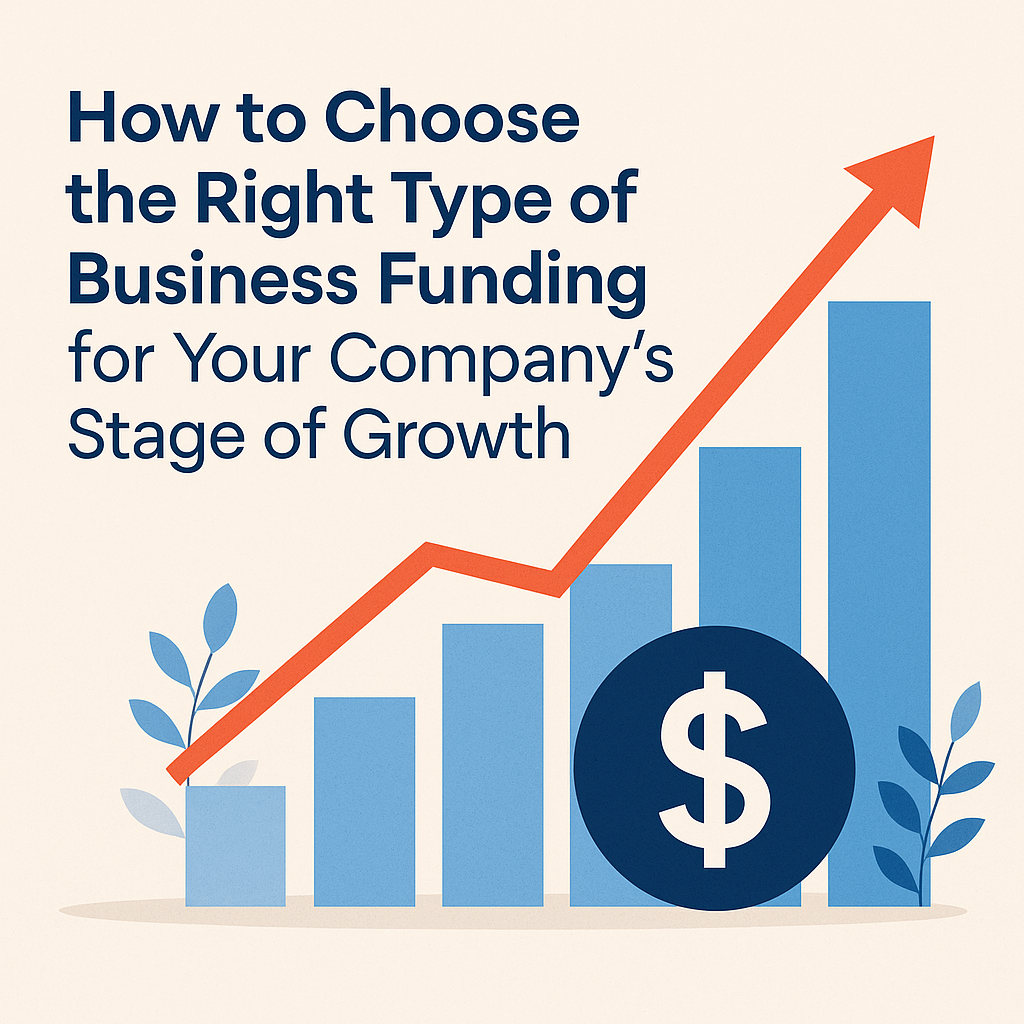Securing the right kind of funding is one of the most critical decisions a business owner can make. Whether you’re launching a startup, scaling a growing company, or stabilizing an established business, the financing solution you choose can shape your operations, ownership structure, and long-term success. With so many funding options available—each with its own benefits and risks—how do you know which is right for your current stage of business growth?
Let’s explore the most effective funding types and how they align with various phases of business development.
1. Pre-Launch and Early-Stage Startups
At the idea or pre-revenue stage, traditional financing like bank loans can be difficult to obtain due to a lack of collateral, proven revenue, or credit history. In this phase, startups often turn to:
-
Bootstrapping: Using personal savings or revenue from early sales. This offers full control but can be financially risky.
-
Friends and Family: Informal loans or investments can bridge initial gaps, but must be approached with legal structure and caution.
-
Grants & Competitions: Non-dilutive capital from pitch competitions, accelerator programs, or government agencies can be ideal for early-stage innovation.
2. Launch to Growth Stage (6–24 Months)
Once a business has a product, customers, and early revenue, it’s time to invest in marketing, hiring, and inventory. This is where external capital can help accelerate momentum. Funding options include:
-
Microloans: Offered by nonprofit lenders or SBA intermediaries, typically up to $50,000.
-
Business Credit Cards: Useful for managing cash flow and earning rewards, though interest rates can be high if not paid off quickly.
-
Online Term Loans: Fintech lenders provide fast access to funding with flexible terms, though rates are often higher than banks.
-
Merchant Cash Advances (MCAs): Repayments are based on future sales, making them attractive for companies with strong card revenue, but they carry steep fees.
3. Established Businesses with Steady Revenue
Companies generating consistent revenue for at least 12–24 months may qualify for more structured, affordable financing:
-
Bank Loans & SBA 7(a) Loans: Ideal for equipment purchases, expansion, or working capital. SBA loans offer competitive rates with longer repayment terms but have stricter qualification requirements.
-
Lines of Credit: Revolving access to capital that can be drawn and repaid as needed, perfect for seasonal businesses or unexpected costs.
-
Invoice Factoring or Financing: Unlocks cash tied up in unpaid invoices—especially useful for B2B companies.
4. Scaling and Expansion Phase
For businesses poised for rapid growth or entering new markets, larger funding rounds are often necessary. Options include:
-
Equity Financing (Angel Investors or Venture Capital): In exchange for ownership, investors provide significant capital and strategic support. This is ideal for high-growth startups in tech, healthcare, and innovation.
-
Revenue-Based Financing: A hybrid model where repayment is based on a percentage of monthly revenue, offering flexibility without giving up equity.
-
Asset-Based Lending: Loans secured by physical assets like inventory, equipment, or receivables. These can unlock higher amounts than unsecured loans.
5. Mature Businesses Seeking Long-Term Stability
For businesses that have proven models and robust financials, the focus may shift toward sustainable growth, acquisition, or succession planning.
-
Commercial Mortgages: For purchasing or refinancing property.
-
Business Acquisition Loans: To buy competitors, expand into new regions, or franchise.
-
Private Equity: Investors who provide capital and strategic guidance in exchange for a controlling or minority stake.
-
Corporate Bonds or Debentures: Large, creditworthy businesses may issue bonds to raise capital from investors.
Choosing Wisely: Key Considerations
-
Know Your Numbers: Lenders and investors will examine cash flow, profit margins, credit history, and your growth trajectory.
-
Understand the Cost of Capital: Whether it’s interest, equity dilution, or revenue share—know what you’re giving up for access to capital.
-
Match the Term to the Use: Short-term needs (like inventory) should be funded with short-term financing. Long-term investments (like equipment or real estate) deserve long-term capital.
-
Think Beyond the Money: Strategic funding partners can bring networks, mentorship, and industry insight.
Final Thoughts
The right funding at the right time can be a game-changer. But choosing poorly—whether over-borrowing, giving up too much equity, or accepting high-cost debt—can stunt your growth or even jeopardize your business. By understanding your stage, evaluating your needs, and comparing funding options, you can make a decision that fuels your growth while preserving your vision and control.
Funding isn’t one-size-fits-all. It’s a custom fit for where your business is—and where you want it to go.
